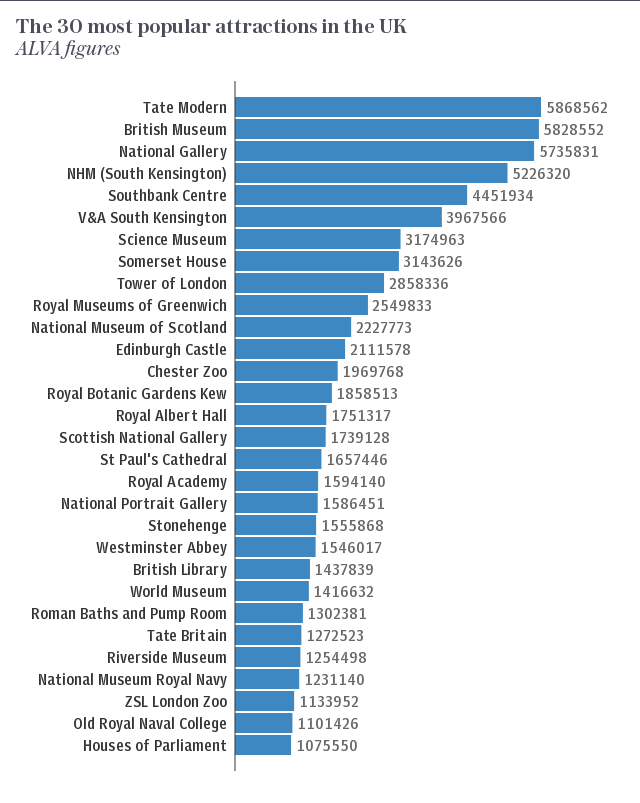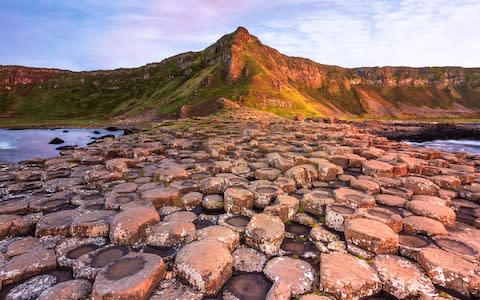The Tate Modern is now more popular than the British Museum – but which is better?

Earlier today, the Association of Leading Visitor Attractions (ALVA) announced its members’ visitor figures for 2018, with some surprising (and some not so surprising) results.
All of the top 10 are located in London, showing that the English capital is still going strong in spite of recent political events. But for the dedicated army of museum goers who love nothing more than reading endless streams of plaques and signs about the ancient world, it may come as a surprise to learn that the most popular attraction in the UK this year, is the Tate Modern – knocking the British Museum off the top spot.
The success of the free-to-enter gallery for international modern and contemporary art has been attributed to its celebrated new extension as well as two stellar exhibitions: The EY Exhibition: Picasso 1932 – Love, Fame, Tragedy, and Modigliani.
In contrast, the British Museum, which has over 240 years on the Tate Modern, saw a slight decrease in visitor numbers (1.3 per cent), with some objects taking a break as part of major touring exhibitions.
The battle of old against new will continue in 2019, with the British Museum promising exhibitions such as Edvard Munch: love and angst (April 11-July 21) and Rembrandt: thinking on paper (until August 4), while the Tate Modern will showcase work by Dorothea Tanning (until June 9) and Olafur Eliasson (July 11-January 5).
Another surprising result was that in 2018, more people went to Chester Zoo than Stonehenge – the family wildlife attraction drew over 1.9 million visitors compared to the World Heritage site’s 1.5 million.
It was good news all round though as overall, visitors to UK sites increased by 8.68 per cent. While London dominated the top 10, Scotland outperformed the rest of the UK for the seventh year running, with numbers there increasing by an impressive 19 percent.
The findings show that last year, 138.8 million visits were made to the top 249 ALVA sites in the UK. Of those, London accounted for 67.6 million – impressive when you consider that the city is only home to around 8.6 million people.

There was a definite trend of innovation sparking a rise in visitor numbers as attractions that saw the largest increase in numbers were those that welcomed new exhibitions and openings. For example, after reopening the Hayward Gallery, Queen Elizabeth Hall and Purcell Room after over two years of renovations, the Southbank Centre saw an increase in visitors by over a third – its 31.7 per cent increase moving it up into fifth place.
The Royal Academy, which celebrated its 250th birthday in 2018, saw visitor numbers almost double to just shy of 1.6 million, causing it to rise 12 places in the rankings to number 18.
But while a 52 per cent increase is impressive, it’s nothing compared to the 111 per cent increase experienced by Liverpool’s World Museum, mostly attributed to the phenomenal success of their rare exhibition of China’s First Emperor and the Terracotta Warriors, which welcomed more than 610,000 visitors.

While ancient figures made out of your grandma’s favourite pot material bolstered Liverpool, it was an even older ancestor that helped boost visits to the Birmingham Museum and Art Gallery, with the arrival of Dippy, the replica diplodocus skeleton that used to stand in the Hintze Hall of London’s Natural History Museum, helping numbers to increase by 38 per cent and attracting crowds of over a quarter of a million people.
The most visited attraction beyond London was the National Museum of Scotland, which beat the seemingly always overrun Edinburgh Castle to the 11th spot, attracting over 2.2 million people throughout 2018.
The Scottish National Gallery did well, coming in at 16th and the new V&A Dundee showed remarkable promise for 2019 after receiving over 340,000 visits between its opening in September and the end of the year.
Scotland was also home to one of the most impressive increases of the year. Newhailes, near Musselburgh, saw massive increase of over 1168 per cent after the introduction of the Weehailes children’s play park and embodied the trend in growth of National Trust for Scotland sites which attributed for four of the top seven ALVA sites with the most growth in the whole of the UK.
Northern Ireland didn’t do too badly either – and things are only expected to boom further with the release of the final season of Game of Thrones later this year. Especially for the Ulster Museum, which has already benefited from a 10 per cent increase in footfall thanks to their 77 metre Game of Thrones ® Tapestry. Giants Causeway did unsurprisingly well with over one million visits, while Titanic Belfast attracted just shy of 837,000 people – an eight per cent increase from 2017.

The figures are promising in light of the statistics released earlier this year that revealed that visitor numbers to the UK fell 5.3 per cent in 2018. It’s also worth noting that these figures don’t include anything owned by the National Trust, the WWT, or groups such as Merlin, who own the likes of Alton Towers Resort and Warwick Castle. It also explains why nothing from Wales is included on the list – it’s not that no one’s going there.

